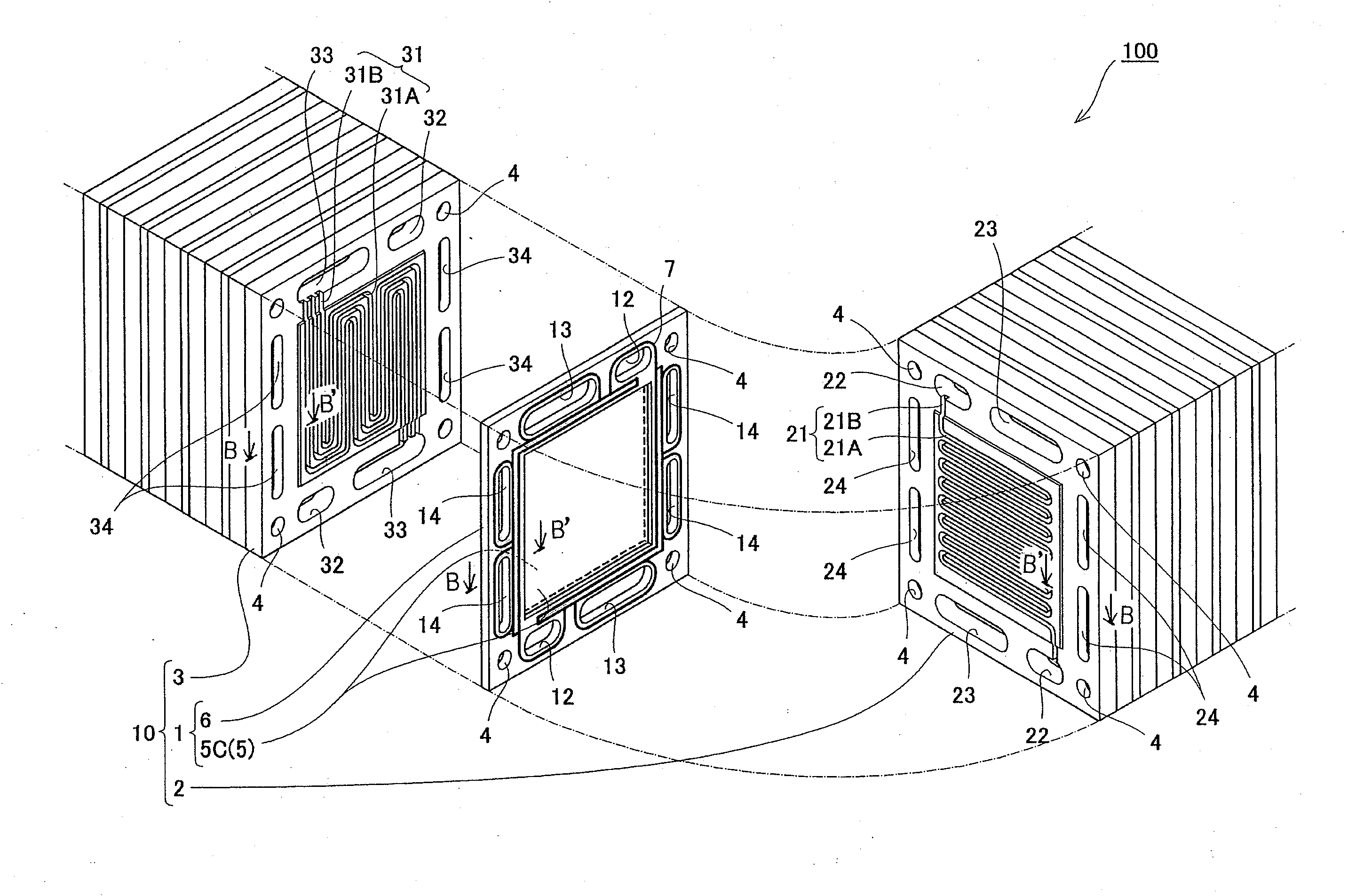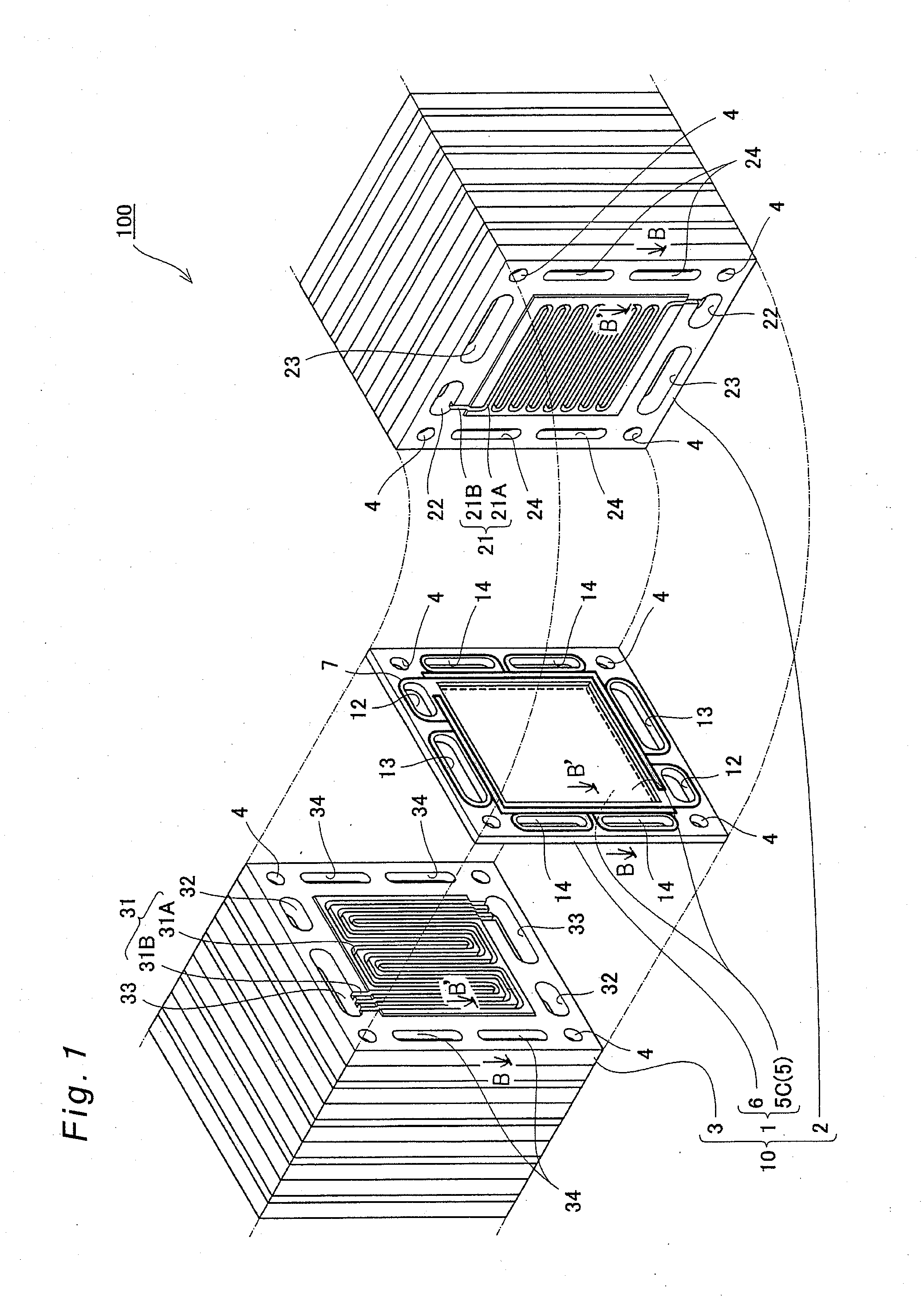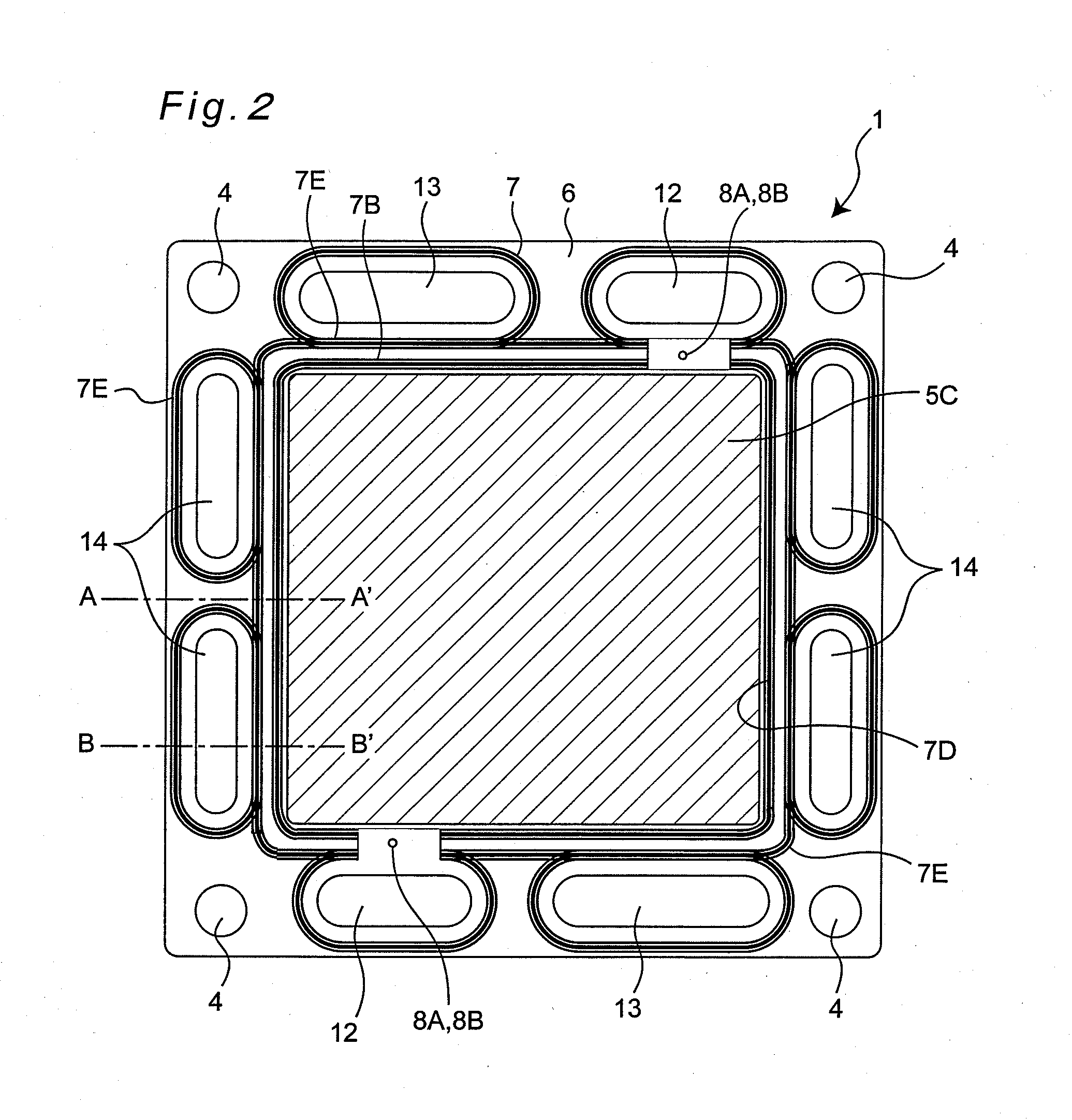Electrode-membrane-frame assembly for fuel cell, polyelectrolyte fuel cell and manufacturing method therefor
a fuel cell and electrodemembrane technology, applied in the field of solid polyelectrolyte fuel cells, can solve the problems of affecting the compactness of the fuel cell constituted by stacking a plurality of electric cell modules, and the comparatively expensive mea member, so as to improve the yield, the effect of improving the yield
- Summary
- Abstract
- Description
- Claims
- Application Information
AI Technical Summary
Benefits of technology
Problems solved by technology
Method used
Image
Examples
first embodiment
The First Embodiment
[0082]FIG. 1 is a partially exploded perspective view schematically showing the structure of a polyelectrolyte fuel cell (hereinafter referred to as “PEFC”) according to the first embodiment of the present invention.
[0083]As shown in FIG. 1, a PEFC 100 is constituted by stacking a plurality of cells (electric cell modules) 10. It is noted that a collector plate, an insulating plate and an end plate (terminal plate) are attached to the outermost layer at both ends of the cells 10, and the cells 10 are constituted by being fastened with fastening bolts that penetrate bolt holes 4 from both ends and nuts (neither is shown). In the first embodiment, sixty pieces of cells 10 are layered, and the bolts that penetrate the bolt holes 4 and the nuts are fastened with a fastening force of 10 kN. Although the structure in which the plurality of cells 10 are layered is described as an example of the first embodiment, the invention can also be applied to a case where the PEFC...
second embodiment
The Second Embodiment
[0113]The invention is not limited to the above embodiment but allowed to be implemented in various modes. For example, a schematic plan view of an electrode-membrane-frame assembly 51 according to the second embodiment of the invention is shown in FIG. 8. A top view of the first frame body is shown in FIG. 9, and a top view of the second frame body is shown in FIG. 10. Further, a sectional view taken along the line C-C′ of the electrode-membrane-frame assembly 51 of FIG. 8 is shown in FIG. 11, and a sectional view taken along the line D-D′ is shown in FIG. 12. In the electrode-membrane-frame assembly 51 of the second embodiment, same components as those of the first embodiment are designated by same reference numerals, and no description is provided therefor.
[0114]As is apparent from FIGS. 8, 9, 10, 11 and 12, the electrode-membrane-frame assembly 51 of the second embodiment differs from that of the first embodiment in that the gasket 7 does not have the double...
PUM
 Login to View More
Login to View More Abstract
Description
Claims
Application Information
 Login to View More
Login to View More - R&D
- Intellectual Property
- Life Sciences
- Materials
- Tech Scout
- Unparalleled Data Quality
- Higher Quality Content
- 60% Fewer Hallucinations
Browse by: Latest US Patents, China's latest patents, Technical Efficacy Thesaurus, Application Domain, Technology Topic, Popular Technical Reports.
© 2025 PatSnap. All rights reserved.Legal|Privacy policy|Modern Slavery Act Transparency Statement|Sitemap|About US| Contact US: help@patsnap.com



